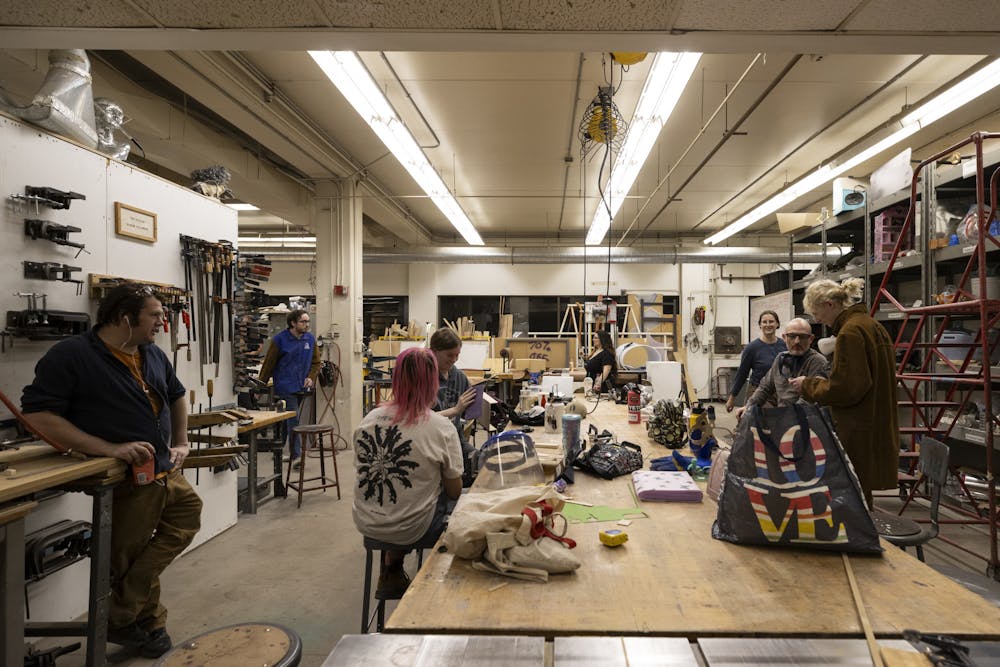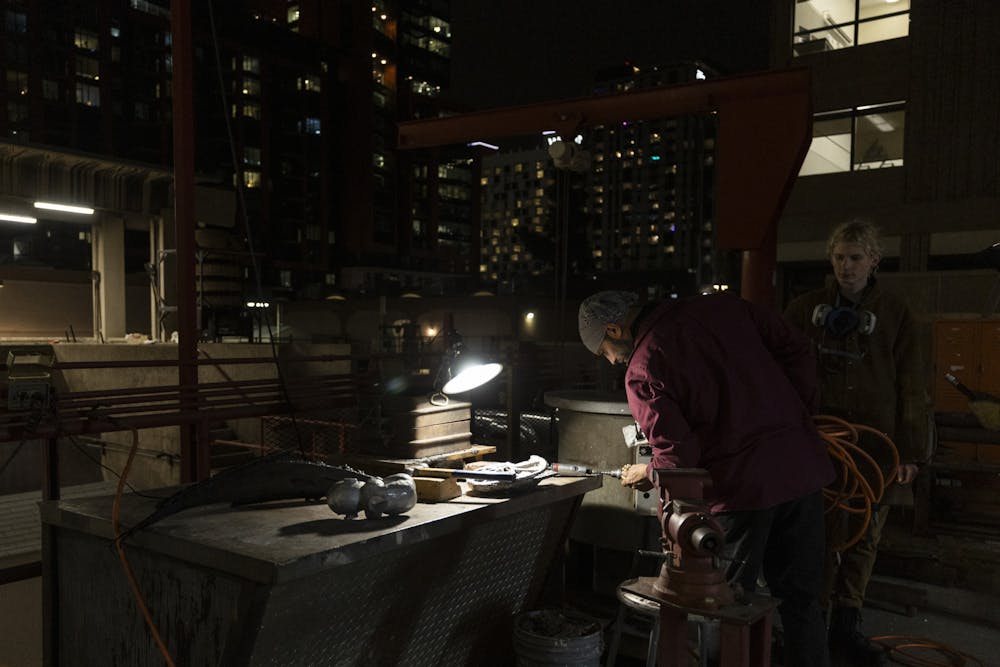Cloaked in layers of leather, hard hats and safety glasses, the artists waited in anticipation for glowing iron to pour from the cupola furnace.
ASU's metal casting arts organization, Fahrenheit 2150, sponsors iron casting events once a semester. This semester, their 2023 Koji Iron Pour was hosted at Scottsdale Community College on Nov. 4, with faculty and students from both schools and guest professionals in attendance.
Many sculpture artists gather in a communal iron pour, heating pounds of iron at once to cast into molds, ranging from abstract art to recreations of childhood relics.
ASU students cast in metals such as bronze and aluminum on campus. However, heating iron melts at 2,800 degrees Fahrenheit and requires a particular type of cupola furnace to reach extremely high temperatures.
The process began with two different types of molds — ceramic and resin-bonded sand — created by the students and brought to the event.
"We can make literally anything," Megan Wahlman, a senior studying architecture, said.
In the past, she has used 3D printing to make molds and cast her own crochet work in bronze.
For the iron pour, she made a mold of the book "Fahrenheit 451" and burned a copy of it into the sculpture during the casting process as a "comment on media today."
Each participant's art at the pour was deeply personal, but using metal as a medium took a collaborative effort.
Fahrenheit 2150's faculty advisor Christopher Luper, an art faculty associate with the School of Art who teaches foundry classes, said the artist is isolated in other art forms like painting.
"In foundry, you still have that element, but then you all have to get together in order for everybody's things to come out," Luper said.
During the event's safety briefing, each person was assigned to a specific team with a distinct role in the process.
Morgan Kerrigan, a junior studying animation, was part of the safety team, ensuring the participants cared for themselves during the casting process.
"You just watch out for people, for signs of heat exhaustion, make people drink water," Kerrigan said.
According to Kerrigan, the Arizona climate, combined with layers of protective clothing and the furnace's heat, poses a safety risk for the artists. Another job of the safety team was to stand by with shovels in order to put sand over the hot metal.
"I've never really been an artistic person," said Isaac Rhoden, a junior studying material science and engineering. "There's an amount of technical skill to it, but it's also more how well you can execute an idea, and that's really what I'm a lot better at than drawing or painting."
Rhoden discovered the foundry class on a list of courses for his major, and three semesters later, he still participates in pours. He explained that the iron, which comes from recycled bathtubs that the program collects, is oxygen-lanced to get rid of rust that can make the iron brown-colored and challenging to work with.
The heat in the cupola is maintained by coal coke — a porous stone used for fuel — and it spouts out a steady flow of iron once the cupola is ready. The ladle team then pours the iron into the molds.
The next day, when the iron had cooled completely, the students opened the molds and polished their sculptures.
"It's like Christmas day when you open your mold," Luper said.
The process of casting and the community of foundry artists are integral parts of the lives of many of the students who attended the pour.
"People don't realize how much of a part of life metal casting is," Anne Sipos, a senior studying sculpture and the co-president of Fahrenheit 2150, said. "Pothole covers are often cast in foundries, and not just art itself, even our car parts."
She also draws a strong connection between the casting process and her values. Her work that day focused on her relationship with faith, and she said that she sees biblical analogies come to life when she pours.
"There's so many opportunities, not to mention the absolutely great community," Kerrigan said. "I like to spend all my time here or in the studio. I spend my weekends there when I can."
The iron pour allowed Kerrigan and the other student artists at ASU and Scottsdale Community College to bring their ideas to life through sculpture.
Edited by Mia Osmonbekov, Walker Smith and Caera Learmonth.
Reach the reporter at spbracci@asu.edu and follow @SophiaBraccio on X.
Like The State Press on Facebook and follow @statepress on X.
Sophia is a junior studying journalism and mass communication. This is her fourth semester with The State Press. She has also worked at Nomads with Notebooks and Blaze Radio and interned for The Arizona Republic.






